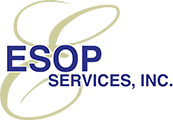Is Inflation Good for the ESOP “Tax-Free” Rollover?
The increased interest rates coming to your town soon as the result of roaring inflation can be a good thing for many individuals who have elected to defer capital gains under IRC 1042, the “tax-free” rollover.
Floating Rate Notes
Many if not most electing individuals choose to “monetize” (leverage for cash) the Qualified Replacement Property (QRP) acquired in compliance with IRS regulations. The most frequently used approach is to acquire an investment vehicle called Floating Rate Notes (FRNs), then borrow up to 90% of the proceeds and create a traditionally managed investment portfolio. (Of course, the borrowed proceeds could buy a vacation home, pay off debt, etc.) The FRNs are actually long-term, (30, 40, or 50 years), investment grade (AAA, AA, A) bonds whose interest rate resets periodically, usually quarterly to keep pace with prevailing rate movement. A rising interest rate environment should not cause the bond to lose face value, and should generate a higher yield.
Low Interest Rates Aren’t Forever
In the low interest rate environment that has seemingly been with us forever, there is a negative differential between the interest rate that the FRN pays and the interest rate charged on the margin loan against the FRN. This so called “cost to carry” has been at or above 1% throughout the low interest rate environment. With interest rates projected to rise at least 1% in the coming year, the holders of FRNs who have leveraged at or near 90% should expect to see their cost to carry approaching zero by the end of this year. One percent may not seem like a lot, but on a $10 million FRN portfolio, that translates to $100,000 per year.
How Safe Are FRN’s?
Now that we have established that a year from now the cost to carry FRNs should be approaching zero due to the Fed’s announced interest rate hikes due to inflationary pressures, a related question arises. Inflationary pressure and rising interest rates seem to go hand-in-hand with market volatility. So how safe are FRNs, especially in a volatile market? Very.
Most FRNs are investment grade, rated A or better. But they are still corporate bonds subject to a downgrade by the rating agencies if the issuing company has financial difficulties. That is exactly what happened in the crash of 2008/2009. All FRNs that I know of have a put option which allows the holder to periodically “put” the FRN, i.e., require the issuing company to buy back the bonds. The put option normally starts at 98% of face value and moves to 100% or even higher the longer the FRN is held. The put option is normally every one to three years with older FRNs tending to have the shorter one-year put.
Reduce RISK
The FRN is still a long-term corporate bond and companies can default on corporate bonds. That is why utilizing the full 12-month post transaction window under Section 1042 to build a fully diversified portfolio of FRNs is highly recommend. Because FRNs are issued very infrequently these days, the sooner an individual who has elected the IRC 1042 “tax-free” rollover begins to acquire FRNs the better.
More Information
If you are interested in more information, please let us know and we will put you in touch with a financial advisor that specializes in the ESOP “tax-free” rollover.
Ron Gilbert, President
esop@esopservices.com
(434) 286-3130
esopservices.com
